

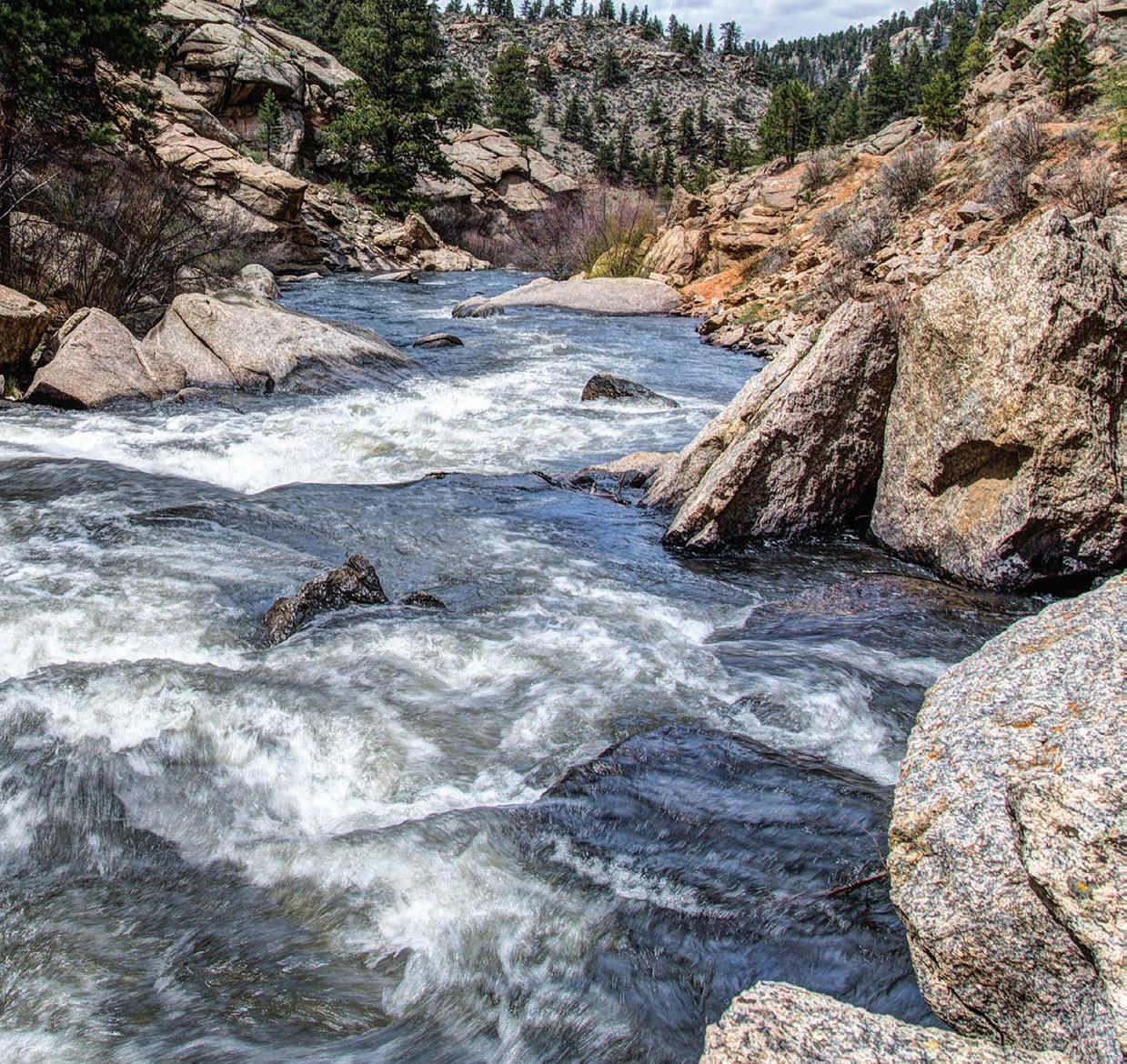




Address Service Requested. RMSAWWA CSU Spur Hydro 4777 National Western Drive Denver, CO 80216 A JOINT PUBLICATION OF ROCKY MOUNTAIN SECTION of the AMERICAN WATER WORKS ASSOCIATION & ROCKY MOUNTAIN WATER ENVIRONMENT ASSOCIATION MARCH – APRIL 2024 ROCKY MOUNTAIN COLORADO | NEW MEXICO | WYOMING Resource Recovery





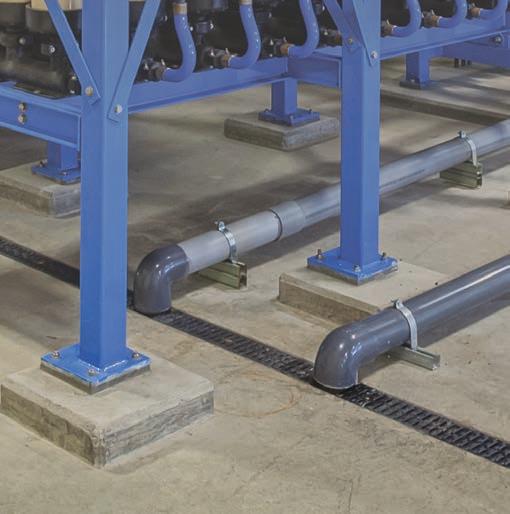



Conquer your engineering and construction challenges with our design-build solutions. burnsmcd.com










National resources, local expertise


Project Manager Jessica Johnson is passionate about securing and protecting public water supplies in Colorado for generations to come. And, with the backing of a nationwide firm with over 100 years of service, she’s well equipped to meet the toughest challenges facing utilities and communities and protect this vital resource.




 Jessica Johnson | Colorado Project Manager
GarverUSA.com
Jessica Johnson | Colorado Project Manager
GarverUSA.com



Rocky Mountain Water Magazine Group
The following volunteers support RMSAWWA and RMWEA with content collection, management, editing, and reviewing the magazine.
BLAIR CORNING bcorning@englewoodco.gov
HANNAH FODOR hfodor@carollo.com
RORY FRANKLIN rfrankli@auroragov.org
KARI LARESE klarese@highlsandsranch.org
RMSAWWA Communications Committee
KARI LARESE, Co-Chair klarese@highlandsranch.org
RORY FRANKLIN, Co-Chair rfrankli@auroragov.org
ERIN RIDOLFO, eNewsletter Editor eridolfo@rmsawwa.org
RMWEA Communications Committee
ELIZABETH DEWAARD, Chair edewaard@englewoodco.gov
JORI NELSON, eNewsletter Editor jnelson@waterrf.org
NATALIE COOK, eNewsletter Reviewer ncook@auroragov.org
ANDREW DUGAN, eNewsletter Reviewer andrew@andrewwritescopy.com


Published by
Tel: 866-985-9780
Fax: 866-985-9799 info@kelman.ca www.kelman.ca
Managing Editor: Mathias Leiendecker
Marketing
Chad Morrison
©
A JOINT PUBLICATION OF ROCKY MOUNTAIN SECTION of the AMERICAN WATER WORKS ASSOCIATION & ROCKY MOUNTAIN WATER ENVIRONMENT ASSOCIATION
Design/Layout:
Co-ordinator:
Hagidiakow
Manager:
Jackie Magat Advertising
Stefanie
2024 Craig Kelman & Associates Ltd. All rights reserved. The contents of this publication may not be reproduced by any means, in whole or in part, without the prior written consent of the publisher. ROCKY MOUNTAIN VIEW From the RMWEA President 7 From the RMSAWWA Chair 8 COMMITTEE SPOTLIGHT Moving Toward a 50-50 Future 11 MANAGEMENT PIPELINE Just Planting a Seed Here 15 MEMBER IN FOCUS A Water Superstar Finds Inspiration Through the Wyoming Rural Water Association’s Apprenticeship Program 27 OF SPECIAL NOTE Centennial Water Director Retires After Four Decades of Service 34 SCIENCE, RESEARCH, AND TECHNOLOGY WRF Awards Colorado Utilities Funding to Advance the Science of Water 36 MOVERS AND SHAKERS The WEF/AWWA Young Professionals Summit 38 HOT TOPICS Registration Now Open for AWWA’s 2024 Annual Conference and Expo June 10-13 in Anaheim, CA 41 ROCKY MOUNTAIN WATER MAGAZINE SUBMISSION GUIDELINES 44 QUICK CONNECTIONS 47 ADVERTISER PRODUCT & SERVICE CENTER 49 Address Service Requested. RMSAWWA CSU Spur Hydro, 4777 National Western Drive, Denver, CO 80216 On the cover: Eleven Mile Canyon inside the Pike National Forest of South Central Colorado. Dreamstime.com MARCH – APRIL 2024 COLORADO | NEW MEXICO | WYOMING Features Columns Pilot Plant Keeps Aurora Ahead of the Curve New Realities: Biosolids Seminar Takes on Upcoming Regulations and Technologies in Resource Recovery 17 23 ROCKY MOUNTAIN VOL. 56 NO. 83
RENEWABLE ENERGY IN THE ROCKIES AND BEYOND







Paving the Way Through Innovation




Carollo was proud to partner with South Platte Renew on the award-winning Pipeline Injection Project, which beneficially reuses biogas from the solids digestion process by injecting renewable natural gas directly into Xcel Energy’s pipeline for downstream use. Carollo has also provided biogas and renewable natural gas solutions for the City of Longmont and Metro Water Recovery.
Our Denver-based team is currently assisting the City of St. Cloud, MN, with developing a renewable natural gas facility and the nation’s first hydrogen production facility at a water resource recovery facility. For this project, Carollo helped the City receive a $3.7-million grant from the Department of Energy. These facilities will generate revenue for the City, while setting a new industry benchmark for sustainability.


Serving our clients throughout Colorado, New Mexico, and Wyoming 800.523.5826 / carollo.com
South Platte Renew Pipeline Injection Project / Englewood, CO
City of St. Cloud Nutrient, Energy, and Water Resource Facility Energy and Equipment Improvements / St. Cloud, MN
FROM THE RMWEA PRESIDENT
Fostering Meaningful Connections Among Water Professionals
Bill Peretti, RMWEA President
As the winter is hopefully fading away into warmer weather, I’m excited for the upcoming year ahead. The changing of the season brings a sense of renewal, growth, and opportunity. It’s with great pleasure and anticipation that I bid farewell to winter and extend a warm welcome to the vibrant energy of spring.
At the heart of RMWEA lies a steadfast commitment to elevating water professionals. We do this through one of the core values – the profound belief in the power of connection. Through our numerous in-person events, such as the recently concluded Fundamentals School in January, the upcoming Intermediate/ Advanced School scheduled in March, the Innovative Water Technology Seminar in February, and the Ops Challenge Regional event, to name a few, RMWEA strives to foster meaningful connections among water professionals.
These gatherings are more than just opportunities for learning and gaining training units – they are hubs
of collaboration and innovation. These in-person learning environments not only facilitate interaction with presenters, but also encourage camaraderie and networking among attendees. The camaraderie is essential for fostering the relationships that lead to effective problem-solving and professional growth down the road.
I would also like to take a moment to highlight another core value of RMWEA: collaboration. This year marks a unique milestone as I serve as president for second term. I am immensely grateful for the collaborative spirit exhibited by two past presidents currently serving on the Executive Committee as joint Immediate Past Presidents Jamie Safulko and Hannah Fodor. Their leadership and dedication to

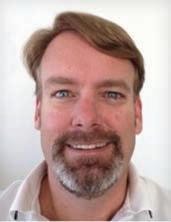
RMWEA have been instrumental in keeping RMWEA moving forward and consistent, but selfishly speaking, making my role much easier. Additionally, the RMWEA and our partner RMSAWWA are continuing to collaborate to create opportunities that will reach more members and bring more value to our respective organizations and industries.
As always, please be sure to check the RMWEA calendar for upcoming events. The calendar can be found under the events tab at www.RMWEA.org. If you are interested in getting involved, have any questions about RMWEA, please feel free to reach out to me or anyone else on the RMWEA board. The RMWEA can always use more volunteers.
At the heart of RMWEA lies a steadfast commitment to elevating water professionals. We do this through one of the core values – the profound belief in the power of connection.
ROCKY MOUNTAIN VIEW
RETURN TO CONTENTS ROCKY MOUNTAIN WATER MARCH – APRIL 2024 | 7
FROM THE RMSAWWA CHAIR
Spring Update
Charlie Leder, PE, RMSAWWA Chair, Senior Associate at Hazen and Sawyer
Welcome to the March/April issue of Rocky Mountain Water Magazine. By now, you couldn’t help but notice the artistry and handiwork our new publisher, Kelman & Associates is bringing to our magazine. Given that I’m writing this article in late December 2023 for publication in March 2024, I trust my comments on the expected new look of our magazine are justified. If not, it won’t be the first time I’ve been punked.
This month, AWWA is celebrating Women’s History Month as part of its yearround DEI initiatives. It’s worth noting that since the turn of the 21st century, women have served as RMSAWWA chair in nine of 23 years. By that DEI measure alone, it sure seems like our section gets it. Our annual DEI Champions Award is named the Mikkelson-Burgi Award in honor of Sue Mikkelson, the very first woman to serve us as RMSAWWA chair in 1982-83, and Karen Burgi who served us as chair in 2005-06. By the way, if any members know how to contact Ms. Mikkelson, it sure would be great to get her recollections of her time as chair and the water industry written down before they are lost forever.
This month’s theme for Rocky Mountain Water is all about resource recovery. Buckminster Fuller, noted architect, designer, and futurist from the 20th century, and inventor of the geodesic dome stated, “Pollution is nothing but resources we’re not harvesting. We allow them to disperse because we’ve been ignorant of their value.”
Maybe we didn’t quite think things through when we were barging biosolids from New York and Philadelphia for disposal
in the Atlantic Ocean through the 1970s and yes, this was happening.
My letter to RMSAWWA members shares a few of my thoughts and observations on this topic. For starters, resource recovery calls for holistic solutions that bridge the silos of one’s day-to-day experiences, and some thinking outside of the box. I’m pleased to note that since the biosolids barges back East stopped sailing, we have gotten better at managing what we used to call waste side streams. A couple of specific examples I can point to that my former colleagues at the Albuquerque Bernalillo County Water Utility Authority (Water Authority) current practice includes water treatment plant iron sludge management and biosolids composting. As discussed in the 2023 March/April issue of Rocky Mountain Water, the Water Authority discharges up to 5,000 pounds a day of iron sludge to get an odor control benefit in the collection system and reduced hydrogen

This month, AWWA is celebrating Women’s History Month as part of its year-round DEI initiatives. It’s worth noting that since the turn of the 21st century, women have served as RMSAWWA chair in nine of 23 years.
sulfide levels in anaerobic digester gas, all while cutting the amounts of liquid ferric chloride and hydroxide chemicals that would otherwise need to be added to the collection system for odor control.
The concept of resource recovery is also at play in the Water Authority’s biosolids composting operation. For the past 31 years, their secret recipe blends waste horse bedding, chopped-up green waste, and biosolids, including some of those iron solids mentioned earlier, to make compost that’s reused in gardens and landscaping throughout the Rio Rancho-Albuquerque area and in New Mexico Department of Transportation landscaping projects throughout New Mexico. This resource recovery practice beneficially recycles green waste and waste horse bedding that would otherwise take up space in a landfill. Metro Water Recovery’s biosolids land spreading operation on dryland crops is another great example of recycling for an agricultural benefit.
ROCKY MOUNTAIN VIEW
RETURN TO CONTENTS | ROCKY MOUNTAIN WATER MARCH – APRIL 2024 8
If you ask your typical drinking water or clean water utility manager or executive what is one of their current insomnia issues, no doubt many would say PFAS. As the science about PFAS is better understood and researched, let’s hope we don’t wind up throwing the baby out with the bathwater when it comes to decisions and regulations made regarding residual management. For those managers either planning to or currently treating their potable water supply for PFAS using today’s favorite technologies, i.e. ion exchange or carbon adsorption, let’s hope we can find a sensible way to manage the spent resins or carbon media that will be consumed while treating source water. Recycling anyone? How?
Pivoting to resource recovery within the one water community, the Colorado Department of Public Health and Environment deserves a big round of applause for its recently released, comprehensive set of regulations that will enable direct potable reuse (DPR) projects in
Colorado and serve as a model for other state agencies to emulate. Finally, we’re beyond the toilet-to-tap catchphrase a clever San Diego politician coined in the mid-1990s. Today, DPR and industrial pre-treatment (IPR) projects will be built on a foundation of source control (hey there IPR workers, you’ve got a new name and purpose!), salinity management, controls, and safeguards for handling off-spec water, public education, and operator training for the advanced treatment schemes that these systems will use.
For those that want to target and focus on what needs to be monitored and removed in a DPR/IPR system, there is cutting-edge research in toxicology being performed by the New Mexico Produced Water Research Consortium (nmpwrc.nmsu.edu) that establishes a methodology for tackling which classes of compounds should be looked at. There’s an opportunity for collaboration with another water organization and a chance to learn something new.
Membrane processes including ultrafiltration, nanofiltration, and even reverse osmosis may play a role in certain DPR/IPR schemes, which brings us to a few words about everyone’s favorite sidestream management topic otherwise known as concentrate or brine management. For inland systems, as opposed to coastal systems, we currently have evaporation ponds, and disposal wells, or maybe just toss it down the sewer or river and make it someone else’s problem. We’re certainly looking for better ideas for concentrate management and those that can bring them to market will have earned their salt. The work being planned by Blue Brine Ops for converting concentrates from El Paso Water’s Kay Bailey Hutchinson Desalination Plant into marketable commodities such as magnesium chloride or hydrochloric acid may finally close this innermost loop in a circular, one water economy. Let’s keep an eye on this development.





Most see a dam. We see a refreshing drink of clean water.



ENGINEERING POSSIBILITIES.



RETURN TO CONTENTS ROCKY MOUNTAIN WATER MARCH – APRIL 2024 | 9
olsson.com





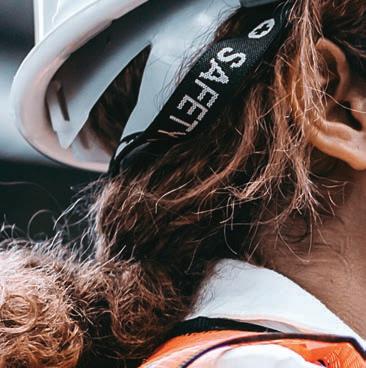





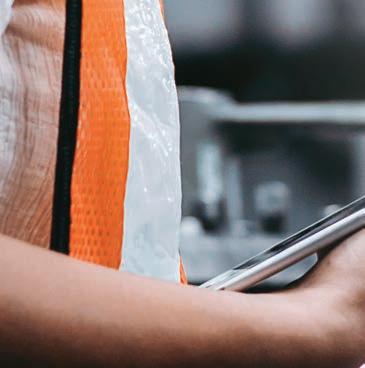




COMMITTEE SPOTLIGHT RETURN TO CONTENTS | ROCKY MOUNTAIN WATER MARCH – APRIL 2024 10






Moving Toward a 50-50 Future
By Marina D’souza Water/Wastewater Engineer, Mott MacDonald

We have come a long way within the field of engineering in the last few decades – from improvements in equipment and design to the introduction of artificial intelligence. With an increased focus on introducing young women to STEM (science, technology, engineering, and mathematics) fields, particularly in the last decade, it is worth taking a closer look into how gender diversity has also progressed within the workforce.

This article includes the experiences of four incredible women within the engineering world over the past two decades:
Cynthia Lane, General Manager at Platte Canyon Water & Sanitation District; Alexis Woodrow, Program Manager at Denver Water; Julia Barker, Unit General Manager at Mott MacDonald; and Rochelle Larson, Principal Engineer at Albuquerque Bernalillo County Water Utility Authority.
Cynthia Lane began her career in the engineering consulting world on the East Coast while completing a professional master’s

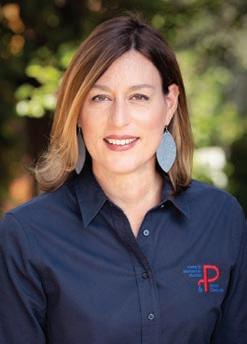



degree in environmental engineering. Several years later, after a stint at American Water Works Association (AWWA), Cynthia found herself at Platte Canyon Water & Sanitation District as the general manager. Alexis Woodrow found her way to Denver Water while pursuing a master’s degree in geographic information systems from the University of Colorado Denver. Since 2007, she has held a variety of roles starting with long-term water supply planning – to her role, now, as program manager for Denver Water’s lead reduction program. Julia Barker has spent her 21-year career in consulting engineering in a variety of roles starting as a transportation engineer in the South to her current role as unit general manager at Mott MacDonald in Colorado. Rochelle Larson began her engineering career after a bachelor’s degree in mechanical engineering and a master’s degree in civil engineering. She started at a consulting firm and, a few years ago, made the switch to a utility.

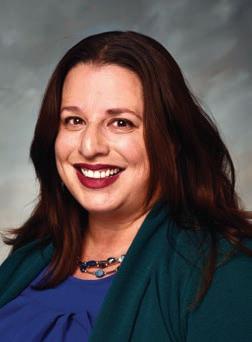









 Cynthia Lane
Julia Barker
Alexis Woodrow
Cynthia Lane
Julia Barker
Alexis Woodrow
ROCKY MOUNTAIN WATER MARCH – APRIL 2024 | 11 RETURN TO CONTENTS
Rochelle Larson
UNDERSTANDING THE PAST
We need context to understand how gender diversity has progressed within the engineering world. What better way than to ask the women who have spent the past two decades being immersed in this field and have seen a multitude of changes take place? From speaking with the interviewees, it was evident experiences varied significantly between geographies and the types of companies or organizations. In the early 2000s, some organizations had women engineers at various levels – starting at the entry level up to middle management. However, there seemed to be a shortage of gender diversity at the executive level. Simultaneously, there were also those organizations that had all but one female engineer. Although the overall percentage of women engineers was low, there were companies at both ends of the gender ratio spectrum.
Educational experiences within engineering were not uniform either. Some interviewees had several female professors for their engineering classes, while others had a majority of male faculty. Around the year 2000, undergraduate engineering classes had an average female representation of approximately 30%, and this percentage dipped ever further for graduate programs. In a particular instance, an interviewee noticed that they were the only women in their graduate-level engineering class.
WHERE WE STAND AND LOOKING AHEAD
The news is not all doom and gloom. An article from the World Bank Utility Survey found that due to intentional measures taken by utilities globally, an upward trend in the number of female employees in water and sanitation utilities is evident – the percentage has increased from 13% in 2011 to 23% in 2016. This increase has been noticed by our interviewees as well. On average, the percentage of female engineers has increased, and women have larger support networks in the workplace in the form of company-supported employee resource groups, as well as interpersonal connections formed through collaborations.
Organizations these days are more and more aware of the need to implement meaningful diversity, equity, and inclusion (DEI) initiatives. It can be tough to inform and educate a workforce set in its ways, but it must be done. Companies have incorporated intentional training for managers on hiring without bias, and policies to support women employees (for instance, the introduction of parental leave policies, and childcare facilities, and the enforcement of anti-sexual harassment policies). The Los Angeles Department of Water and Power has even established an office of DEI that has a top executive who reports directly to the general manager rather than the human resources department. Sean Chambers, Director of Greeley Water and Sewer in Colorado, believes that “Diverse perspectives and experiences are key to good decision-making and leadership. While people might

COMMITTEE SPOTLIGHT
RETURN TO CONTENTS | ROCKY MOUNTAIN WATER MARCH – APRIL 2024 12
Cynthia Lane, General Manager at Platte Canyon Water & Sanitation District, poses with the District Board on a site tour in 2023.
think of utilities as male-dominant cultures, at Greeley Water, female employees make important contributions to all aspects of our operations from planning, engineering, and leadership.”
Intentional implementation of DEI policies in the workplace –from hiring practices to performance reviews – is key to developing a more diverse workforce. Companies also face challenges to improving the diversity within their workforce in the form of applicant pools. An interviewee pointed out that the applicant pool for an operator position is significantly smaller than it used to be, but is also very male-dominated. The interviewee saw just two female applicants out of hundreds over five hiring cycles. According to the 2018 U.S. Census Bureau statistics, women accounted for only 5.8% of water and wastewater operators.
Bringing more women into the engineering world is simply one part of the solution to a diverse workforce – we also need to find ways to keep them in. An interviewee commented that the engineering world needs to find better ways to keep women in the workforce even when they are in primary caregiver roles. It is easy to lose women who take on responsibilities in their personal lives that sometimes compete with their professional ones. These women are no less dedicated to their careers, but life happens to us all. Instituting company-wide policies that allow for flexibility and increased work-life integration will benefit all employees, not just women.

TRUE DIVERSITY IS OUR GOAL
We have seen noticeable improvements toward increasing gender parity within the water industry and the field of engineering in the last two decades. However, more needs to be done if we are to have true gender parity within the next decade. The problems we are asked to solve are becoming more and more complex and a diverse workforce will be critical to tackle them. A diverse workforce provides everyone with more learning opportunities. From an economics lens, genderdiverse companies tend to report higher profits, benefit from more innovation, make better decisions, have more satisfied customers, and have stronger governance. While this article focuses on gender diversity, it is important to note that our identities are intersectional. We should all strive to be more diverse in more ways than one.

The DEI Committee strives to make the Rocky Mountain Section of the water industry a more inclusive and diverse environment for people of all genders and backgrounds. If you are interested in joining the DEI Committee to achieve this goal, please reach out to Marina D’souza at marina.dsouza@hotmail.com or Victor Sam at victor.sam@stantec.com.










SOLVING YOUR MOST PRESSING WATER CHALLENGES. DRINKING WATER. WASTEWATER TREATMENT. WATER RESOURCES. With SEH, you are a true partner and collaborator. Engineers | Architects | Planners | Scientists 800.325.2055 | sehinc.com/subscribe Responsible Dechlorination info@Vita-D-Chlor.com (253)479-7000 Safe for the operator. Safe for the environment. Simple to use. Solutions in Vitamin C dechlorination for over 20years! DOWNSTREAM MATTERS Vita-D-Chlor o ers environmentally responsible Vitamin C dechlorination that works with a variety of equipment. Reach out to our specialists to get answers to your dechlorination questions. RETURN TO CONTENTS ROCKY MOUNTAIN WATER MARCH – APRIL 2024 | 13

All grit removal systems are NOT created equal.


THE PROBLEM: Grit accumulation reduces tank and channel volumes and causes abrasive wear on equipment.
THE SOLUTION: Lakeside’s SpiraGrit® Vortex Grit Removal System
The Lakeside SpiraGrit® Vortex Grit Removal System is a flexible solution for removing grit from the wastewater treatment process. Its proven design features a relatively small footprint and provides efficient grit removal over a large flow range in both concrete structures and standalone stainless steel tanks.
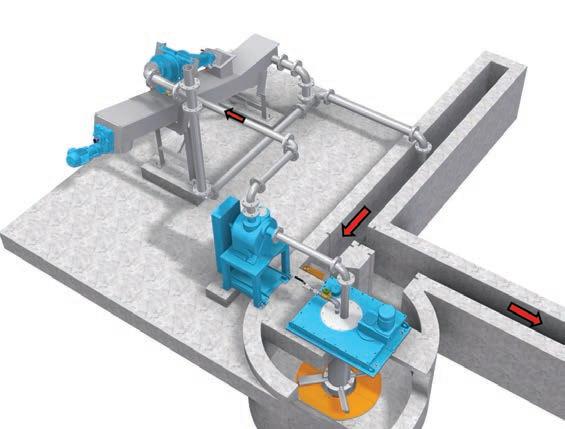
Various grit pumping options — from flooded suction to topmounted self-priming — are available to meet your design requirements. We also offer a range of grit classifiers for grit dewatering and grit washers when additional organic removal for cleaner drier grit is required.
IMPROVE PLANT PERFORMANCE
Cleaner Water for a Brighter Future® All trademarks are owned by Lakeside Equipment Corporation. © 2023 Lakeside Equipment Corporation. REPRESENTED LOCALLY BY: Speak to one of our experts at 630.837.5640, email us at sales@lakeside-equipment.com or visit lakeside-equipment.com for more product information. www.goblesampson.com Goble Sampson Associates 6355 Ward Road Suite 200 Arvada, CO 80004 (303) 770-6418
WITH THE HIGHLY EFFICIENT SPIRAGRIT ® VORTEX GRIT REMOVAL SYSTEM
Just Planting a Seed Here
By Blair Corning
I’ve been hearing a new phrase during consulting meetings and management gatherings. “I’m just planting a seed here.” It seems to be the hot new business phrase. I don’t really like it. It can often seem like a foreshadowing of an “I told you so” looming in the future. Business jargon comes and goes. Nobody wants to “boil the ocean” these days. They do want to “circle back” so they can grab that “low-hanging fruit.”
As much as it bugs me, the phrase “planting the seed” got me thinking. Where in our industry have seeds been planted that have grown? The EPA planted seeds in the early 1970s when it passed the Clean Water Act and Safe Drinking Water Act. These seeds have done wonders in protecting the waterways we have today. Wastewater chemists literally plant seeds daily as they seed BOD samples that need a shot of bacteria to get things going. Utility water conservation programs even plant the seed - to not plant seeds, with their promotion of xeriscaping and turf reduction programs. Where else in our industry are we doing some planting today in order to reap benefits tomorrow? Some examples I have seen include:
1. Workforce Development –Investments now in programs to highlight the great careers in the water and wastewater industry will grow into professionals that can conquer future challenges. Programs such as Littleton’s EPIC Campus which introduces high school students to the world of water and wastewater treatment is an example of developing tomorrow’s water leaders.
2. Innovation and Research –Experimenting with approaches, equipment, and software drives us toward the technology that will be required to meet tomorrow’s permit limits and Maximum Contaminant Levels (MCLs). Facilities are seeing the value of this and responding. South Platte Renew’s Pilot and Research Center and Metro Water Recovery’s in-house research laboratory are examples of investments in innovation.
3. Utility Planning Efforts – Strategic and facility planning efforts undertaken now lay the groundwork needed to meet growing demand and replacement of aging infrastructure. Planning for resiliency, cybersecurity, and sustainability are becoming equally important.
4. Public Education – Helping the public understand the complexity and importance of our industry can go a long way. When future rate increases are needed, having a public that understands and values what we do will be essential. Holding a water festival and spreading the water message at community events are good avenues to educate the public.
5. Partnerships – Nurturing partnerships with other agencies, technology vendors, community groups, and educational institutions ensures industry progress built on a diversity of ideas and perspectives. A partnership between South Platte Renew and Colorado School of Mines to make fertilizer out of the water removed during biosolids drying is a good example
of a partnership with a potentially high upside. These are some examples of areas where we can plant some seeds for the water and wastewater industry. These areas often have a long-term return on investment. They can’t be easily measured and don’t produce immediate revenue. Because of this, they are easy to overlook or put on the back burner due to limited time and funds.
I challenge you to look at your job and your organization and ask yourself, Where can I plant a seed? Where can I start to build something today that will bear fruit tomorrow? If we make our lists and start watering, something great is bound to grow. Let’s stop telling people we are “just planting a seed” and plant some already.

Blair Corning is the Deputy Director of Environmental Affairs at South Platte Renew. Blair has more than 25 years of experience in the water and wastewater industry. Blair has a master’s in water science from the University of Idaho. He serves on the Colorado Water and Wastewater Facility Operator Certification Board and is a board member of the Colorado Wastewater Utility Council. Blair also hosts the Streaming Water Podcast available to most podcast players. He can be contacted at bcorning@englewoodco.gov.
MANAGEMENT PIPELINE
RETURN TO CONTENTS ROCKY MOUNTAIN WATER MARCH – APRIL 2024 | 15



Biochemical Oxygen Demand
Total Suspended Solids
Ammonia-Nitrogen
Nitrate and Nitrite Nitrogen
Kjeldahl-Nitrogen (TKN)
E-Coli, Total Coliform
Metals by ICP-MS and ICP-OES
SOC/VOC
Biosolids-503 Regs/Fecal Coliform
NPDES Requirements
DMRQA Study Participant
Organic Contaminants (SOC/VOC)
DBP (THM/HAA, TOC/ALK)
Inorganic Contaminants (Metals)
Nitrate and Nitrite Nitrogen
Copper and Lead
Total Coliform
Fluoride
Metals by ICP-MS and ICP-OES

A S T E W AT E R D r i n k i n g W AT E R VISITONEOFOURCONVENIENTLOCATIONS FOR MODERNDAYTECHNOLOGYAND OLD-FASHIONED SERVICE! 610 Garrison St. Unit E Lakewood, CO 80215 303.659.2313 www.coloradolab.com info@coloradolab.com Compliance Auto-Ship Bottle Program Contact us Lakewood S ervice Cent er Commerce Cit y Laboratory 10411 Heinz Way Commerce City, CO 80640




Pilot Plant Keeps Aurora Ahead of the Curve


In the catacombs of the Binney Water Purification Facility (BWPF) lies a pilot plant used to develop and perform testing to understand water treatment processes’ efficiency, capability, and effectiveness. BWPF went into service on Oct. 8, 2010. Binney did not include the pilot plant at that time, but Aurora Water didn’t dismiss it. Accommodations were included in the original design for the pilot plant to be built in the future.
“It was built and installed in 2019, and then the pandemic occurred, which put our program behind a little bit,” said Water Treatment Process Specialist Ann Malinaro. “By being able to test these things ahead of time on a smaller scale where we play with variables and find out whether we’re treating something and



 Melina Bourdeau Public Information Officer, Aurora Water
Melina Bourdeau Public Information Officer, Aurora Water









how well we can treat it.” The pilot plant provides operations staff the opportunity to develop and test treatment processes in advance of implementing them at full scale and the opportunity to develop and test technologies without any risk to the city of Aurora’s drinking water as the pilot plant water is recycled to the head of the plant to be treated with the full-scale process.

However, the pilot plant, named Mini-Binney, has hit the ground running with multiple projects underway.
The Binney Water Purification Facility is actually two treatment plants in one. These systems are called treatment trains. The South Platte treatment train uses the Prairie Waters System, a highly advanced treatment train that purifies the water using softening, an advanced oxidation

process (AOP), biologically active filters (BAF), and adsorption with granular activated carbon (GAC). Mini-Binney Pilot Plant has flocculation sedimentation, AOP, BAF, and GAC piloting capabilities. The Aurora Reservoir treatment train uses high-quality mountain source surface water that doesn’t require advanced treatment, simply using conventional treatment with BAF at the end of the treatment train. This pilot plant works independently of the much larger, full-scale treatment facility, and, as mentioned above, the water from the pilot plant does not enter the citywide distribution system. With these tools, Aurora Water can monitor and test drinking water treatment for the city without impacting the safety and quality of the city’s drinking water.


FEATURE
RETURN TO CONTENTS ROCKY MOUNTAIN WATER MARCH – APRIL 2024 | 17
Reprinted with permission from Journal AWWA (Vol 115, No. 5). Copyright © 2023. All rights reserved. The original article may be accessed on the Journal website at: h ps://awwa.onlinelibrary.wiley.com/toc/15518833/2023/115/5.





“Mini-Binney also has an adenosine triphosphate (ATP) analyzer from the Hach company in Belgium. This analyzer quantifies the biological activity within a water column. This provides operation staff with key data to understand how well the processes are working.
With these tools, Aurora Water can monitor and test drinking water treatment for the city.
“We’ve been able to get ahead on some health advisory numbers from the Environmental Protection Agency,” she said. “It enhanced our ability to stay ahead of regulations and change treatment variables without affecting public health. This water is not going to customers. It’s going back to the head of the plant to be re-treated.”
Blending Study at Mini-Binney
The study begins with blending untreated Aurora Reservoir water with highly treated water from the South Platte treatment train.
“Mini-Binney also has an adenosine triphosphate (ATP) analyzer from the Hach company in Belgium. This analyzer quantifies the biological activity within a water column. This provides operation staff with key data to understand how well the processes are working.
With these tools, Aurora Water can monitor and test drinking water treatment for the city.”

“The reason we’re doing that is to answer the question: can you take highly treated water, for example, that has been through advanced water treatment processes and blend it with untreated surface water, and then treat it again?” she said. “Because, potentially, there may be a point of diminishing returns where additional treatment does not have an additional benefit. Malinaro said the project

is promising thus far. The implications for Aurora Water are that it enables us to have the confidence to diversify our water portfolio a little bit more.
Aurora Water is tenacious at testing potential water sources to ensure continued maximum protection of public health. The pilot plant provides quantitative results that allow data-driven decisions to be made regarding potential source water.
Mini-Binney, Aurora Water’s pilot plant in Aurora, Colorado was installed in 2019. Photo by Aurora Water
FEATURE RETURN TO CONTENTS | ROCKY MOUNTAIN WATER MARCH – APRIL 2024 18

“It does increase my confidence that if we have access to a source of water, there’s less trepidation about whether we can treat it,” she said. “Even if we’re not sure we can treat a new source, we have the tools to test whether we can.”
The second project is testing the efficacy of the AOP process. The project begins with verifying the level of treatment the UV skid can provide.
For example, removals of 1,4-Dioxane, a contaminant of concern, can be demonstrated through piloting using the AOP piloting equipment. Operations staff can determine how much removal the process is realizing without ever exposing the customers to any risk.
Once the trial is complete, staff will then experiment with cutting down the power of the lamps to see if the water will be treated to the same degree.
the carbon effluent. If it takes six months at full-scale, it will take six months on Mini-Binney.

“If we play with not just the UV power intensity and the hydrogen peroxide, we might even be able to improve our treatment and reduce treatment costs,” Malinaro said. “We also may be able to improve the downstream filter performance.”
Future Development
Based
on
Pilot Plant Mini-Binney not only serves as an essential tool for treatment, but it also works with other tools and helps to develop more.
One of the first projects at Mini-Binney was testing for perfluoroalkyl and polyfluoroalkyl substances (PFAS), which lasted for two years.
While the study on PFAS in Mini-Binney is done, smaller-scale tests are ongoing.

“But with RSSCT, you can scale it down so something that would take six months on a pilot would take maybe two weeks on an RSSCT,” she said. “What our intern was doing was valuable for us because he was taking his results from his RSSCT and comparing it to the pilot PFAS results. Now that we have the math figured out, we can do either.”
Using RSSCT to perform preliminary tests for the pilot allows pilot research to be more focused and streamlined.
There will be an additional project looking into PFAS adsorption testing.
“We treat softened South Platte water through the Mini-Binney to test PFAS degradation through AOP, BAF, and GAC. Then we send that water to the filtration skid for absorption testing with two new adsorption materials,” Malinaro said. One more significant concern Malinaro has is not so much the new media’s performance.

“There are many ways to test other than piloting,” Malinaro said. “That makes sense if you’re trying to get results in a day. However, in terms of scale, it is difficult to compare a process with two liters of water versus millions of gallons of water.”
A new component of the piloting efforts is the development of a rapid small-scale column test (RSSCT). A former intern utilized RSSCT because it cut the time needed to perform tests on PFAS. Now, staff are in the final stages of building an RSSCT to supplement Mini-Binney.
On the pilot, the timescale is the same as the full scale. So, when testing for PFAS, it will take months before detection in
They don’t know if it’s meant to be used as open-box filter media the way the filters are set up currently. Although there is a desire to verify, it’s more of the hydraulics of it inside of an adsorber.
“We’re looking at maybe layering it with carbon because it’s supposed to adsorb PFOA and PFOS for much longer than carbon does,” she said. “But it doesn’t address anything else, so as far as we know, we still need GAC.”

The tests will include feeding water through GAC and alternate media in a series and as layers within the same adsorber column.
A Secret Ingredient in Measuring Viral Load
While drinking water isn’t recommended to reduce the burn of jalapeño peppers, the reverse has proven helpful for Aurora Water. Using hot sauce at Mini-Binney has helped to demonstrate the water treatment processes’ ability to remove viruses from water.



RETURN TO CONTENTS ROCKY MOUNTAIN WATER MARCH – APRIL 2024 | 19





Peppers can get a virus called the pepper mild mottle virus. It just makes peppers ugly. They’re still edible, and there’s nothing wrong with them. But generally, if you saw one in the grocery store, you’d pick a different pepper. Those ugly peppers are often used for hot sauce, and in Aurora Water’s case, Tapatio can be used as a virus standard because it’s made in such large batches and so homogenized and consistently made.
Because of the size and shape of the pepper mild model virus, it serves as a good surrogate for other viruses that are pathogenic or could adversely impact human health. It’s a non-human pathogenic virus for peppers that is harmless to humans, but it’s measurable.
Malinaro said that so far it appears there is good virus removal even when blending with advanced treated water.
“The more I work with Aurora Water, the longer I am here, the more confidence I have in the water here. People say, ‘Don’t look behind the curtain,’ but the more I see behind the curtain, the more confident I am that we have fantastic processes and amazing people operating those processes.”
“I have some of the virus removal results. We fed the Tapatio in a high enough concentration to measure the virus concentration through the whole floc/sed and filter effluent, or the equivalent of a conventional treatment process. At first glance, it looked pretty good. For Aurora Water specifically, these projects at Mini-Binney increase our confidence that we have a robust process that can treat a variety of source waters.

“It’s not about this virus specifically. It’s about pinning down a measurable log removal,” she said. “A lot of the time, log removal is theoretical. Once the water is through treatment, you don’t have anything to measure in the end. It’s like trying to divide by zero.”

For example, with the 1,4-Dioxane example earlier, a large quantity will need to be fed into the AOP pilot skid to measure treatment effectiveness directly.
“But our processes are so robust that very little makes it through,” Malinaro said.
Aurora Water uses its Mini-Binney pilot plant to monitor and adjust its current processes and to explore new treatment methods. Photo by Aurora Water
FEATURE RETURN TO CONTENTS | ROCKY MOUNTAIN WATER MARCH – APRIL 2024 20

“The more I work with Aurora Water, the longer I am here, the more confidence I have in the water here. People say, ‘Don’t look behind the curtain,’ but the more I see behind the curtain, the more confident I am that we have fantastic processes and amazing people operating those processes.”
The Bioluminescent Enzyme Helps Measure ATP
Aurora is one of the few municipalities with an online ATP analyzer.
The ATP analyzer analyzes the adenosine triphosphate level in the water. ATP doesn’t stick around for very long once outside of a living cell, which, when measured, provides a sense of the biological activity in the water.
Speaking of biologicals, the analyzer uses luciferase enzyme to measure ATP. The enzyme, also found in fireflies and glow worms, reacts to ATP, creating bioluminescence. It works by splitting one phosphate off the ATP molecule, converting adenosine triphosphate (ATP) into adenosine diphosphate (ADP), which causes a reaction creating light. The brighter the reaction, the more ATP is present in the water.

This instrument also measures intracellular ATP, which other tests have difficulty measuring. This process occurs when living cells are blown apart and measured alongside dead cells’ preexisting ATP in the water. This provides an idea of how many living and nonliving biological activities are occurring in the water.
“once you hit it with chlorine, it inactivates everything. This highlights the importance of having a multi-barrier process at Binney. Any contaminant that makes it through one process will likely not make it through subsequent processes.”
“You can get an idea of sluffing events –where there are small bumps in the turbidity of the filter effluent water,” Malinaro said. “There are occasions where we will take some of the filter effluent water, concentrate it, and put it under a microscope to figure out what it was coming through to cause the turbidity to rise. Often you can look under a microscope to see manganese crystals or softening solids, but sometimes you can’t see these things.”



With ATP, you can test that water to see if the turbidity is caused by biological sluffing from the filter. While trialing the analyzer, there were sluffing events where an increase in turbidity coincided with a bump in the ATP number.
A loose rule of thumb specific to Binney water is that if the ATP level is under 10, that’s suitable for drinking water, meaning there is little to no biological activity in the water.
When you test the ATP numbers before the water passes through, the numbers would be hundreds or thousands.
“You would expect that there would be something more than 10 coming out of a biological filter,” she said. “You’d think things were multiplying and breeding and dying, and there’s a lot of ATP coming out. But there isn’t.
The ecosystems maintain themselves within the filter carbon. The biology is typically not coming out through the filter. That’s the kind of question about biological filtration we’ve been able to start answering.”
Any particles in the water are of some concern because they can shield pathogens from disinfection. If there is anything living in the water and living cells are coming out of the filter, it’s essential to maintain confidence that the chlorine treatment is disinfecting. This provides a sense of what is being shed, such as softening solid or manganese versus biological elements.


“Usually, when we have sluffing events, the numbers aren’t high. That’s before we chlorinate the water too,” Malinaro said. “So, once you hit it with chlorine, it inactivates everything. This highlights the importance of having a multi-barrier process at Binney. Any contaminant that makes it through one process will likely not make it through subsequent processes.”
“It gives us confidence in our disinfection, in what we do,” Malinaro said. “When we have a rise in turbidity it is not typically living cells that we need to be concerned about from a pathogenic standpoint.”
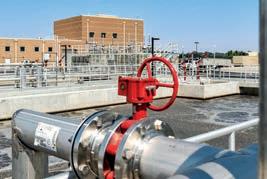

Building Water + Wastewater Projects Nationwide & Across the Mountain West for 45 Years RETURN TO CONTENTS ROCKY MOUNTAIN WATER MARCH – APRIL 2024 | 21
HENSEL PHELPS WATER








REPRESENTED BY: FALCON ENVIRONMENTAL FECAL.US 303.833.9998 INFO @ FECAL.US FALCON ENVIRONMENTAL FLUID HANDLING SOLUTIONS. RELIABLE ROTARY LOBE PUMPS AND MACERATING TECHNOLOGY. ENVIRONMENTAL AND MUNICIPAL TECHNOLOGY VISIT BOERGER.COM TO LEARN MORE. Sludge (Primary, WAS, RAS, Digested, Thickened, etc.), Biosolids, Grease, Sewage, Scum, Lime Slurry, Alum Sludge, Permeate, Polymers, etc. Multichopper
Rotorrake
Multicrusher
Vertical Multicrusher
ONIXline
BLUEline
SingleShaftGrinder
SingleShaftGrinder
Twin Shaft Grinder
Twin Shaft Grinder
RotaryLobePump
RotaryLobePump
NEW REALITIES: Biosolids Seminar Takes on Upcoming Regulations and Technologies in Resource Recovery
BY AMY LOVATT
The Rocky Mountain Water Environment Association Biosolids Commi ee focused on the new regulatory reality when it comes to recovering biosolids during the organization’s seminar.
The annual workshop took place in early November at Metro Water Recovery’s (Metro) Northern Treatment Plant in Brighton, Colorado. Arlisa Michael, Chair of the Biosolids Committee and work planner senior for Metro’s resource recovery and reuse department, explained that the event builds connections, highlights upcoming regulations and technology, and provides an opportunity to earn continuing education credits.
“What we’re trying to do here is just bring in subject matter experts to talk about different products, what’s going on with the industry, the different regulations and new technologies,” Michael said.
Some highlights from the seminar included a talk from Dr. Ian Pepper of the University of Arizona on his national biosolids study on per- and poly-fluoroalkyl substances or PFAS. PFAS were a major theme at the conference, from regulations to new technologies, especially in Colorado.
“How you are handling this, how you are putting it out to the public – with the PFAS particularly – is our biggest driver right now,” Michael said. “That’s our biggest hot button: how we’re handling it.”
Metro’s Chief Strategy Officer Dawn Ambrosio spoke specifically about how Metro is approaching and communicating about PFAS.

Metro has taken a proactive approach that includes monitoring, advocating, and educating.
Ambrosio emphasized that at the center of Metro’s messaging is the idea that PFAS are not byproducts of wastewater treatment but, rather, are sometimes present in the wastewater that leaves homes and businesses.
“Publicly owned clean water utilities like Metro Water Recovery are passive receivers of PFAS chemicals,” Ambrosio said.
Clarifier at the Northern Treatment Plant in Brighton
FEATURE RETURN TO CONTENTS ROCKY MOUNTAIN WATER MARCH – APRIL 2024 | 23

Outfalls at the Northern Treatment Plant in Brighton
Metro’s education emphasizes different approaches for connectors, the general public, employees, and industry partners. This ranges from education to collaboration, providing consumer resources, transparency, and continual updates on the fastchanging regulatory space.
“Metro is helping consumers make informed choices about products containing PFAS,” Ambrosio said, “As an industry leader and committed stewards of the environment, Metro advocates for local, regional, and national regulations that control PFAS at the source.”
For more information, Metro’s website has a page on PFAS to help educate the public, which can be found at metrowaterrecovery.com/community/learn-more-about-pfas/.
Users can find biosolids and effluent monitoring results, frequently asked questions, and ways to help. See how the organization regularly communicates about PFAS on its social media pages, facebook.com/MetroWaterRecovery and linkedin.com/company/ metro-water-recovery.
The event concluded with a Biosolids Committee discussion focusing on what different facilities across the region are doing to address upcoming regulations about PFAS and beyond. A part of the discussion focused on identifying biosolids as a resource.


“Metro beneficially reuses about 85 dry tons of biosolids per day,” Ambrosio said. “It’s important that we frame biosolids as an opportunity for essential nutrient recovery, rather than just waste.”
Another benefit of the seminar, according to Michael, is the opportunity to network with industries, regulators, and organizations of different sizes.
“The best part was just the sharing of knowledge and making the connections,” Michael said. “In the wastewater industry, everything is built on who you know and who can help you out. So, building that network and connecting with the right people, it’s the biggest game-changer.”
Michael emphasized that this was especially beneficial for smaller entities, who can learn from the experiences of both the larger and smaller entities and work through challenges together. It’s also a great time to meet the regulators of the region, many of whom attend the seminar.
Michael highlighted the work to monitor regulations as a benefit to their members and the people they serve. The emphasis on PFAS during the seminar was in reaction to the ongoing conversations and changing regulations.
“We look at the impacts and try with all our might to preserve and protect public health and the environment – it just helps everybody in the long run,” Michael said.
She added that the workshop saw a great turnout, and her committee is always recruiting members.
“Our biosolids group is always looking for new blood in the industry because we’ve got a lot of dinosaurs,” Michael joked.

Amy Lovatt is a Public Information Specialist for Metro Water Recovery. Metro is the largest water and resource recovery agency in the Rocky Mountain West, serving approximately 2.2 million people in an 805-square-mile area. In partnership with 62 local governments, including cities, counties, sanitation districts, and water and sanitation districts, we clean millions of gallons of water every day to be suitable for agriculture, aquatic life, recreation, and water supply.




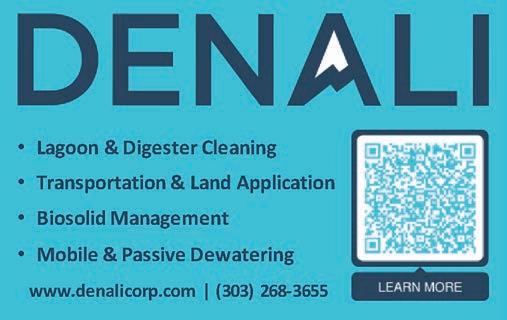
FEATURE You Don't Get to the Top Alone... Huffman Engineering Inc. Making Ideas Work with start to finish engineering projects 112 INVERNESS CIR EAST, STE E ENGLEWOOD, CO 80112 303.376.6280 INFO@HUFFMANENG.COM HUFFMANENG.COM RETURN TO CONTENTS | ROCKY MOUNTAIN WATER MARCH – APRIL 2024 24







concern for the environment is more than just talk This publication is printed on Forest Stewardship Council® (FSC®) certified paper with vegetable oil-based inks. Please do your part for the environment by reusing and recycling. Our engineers and scientists create customized, creative and technically innovative solutions that position our clients for the future. Solving the Rocky Mountain Region’s most complex water challenges.
provides intelligent solutions for water challenges - what can we solve for you? plummer.com RETURN TO CONTENTS ROCKY MOUNTAIN WATER MARCH – APRIL 2024 | 25
Our
Plummer
One Water Solutions Start Here

Through holistic planning, we help communities map out a sustainable water future. Our One Water approaches focus on affordable, equitable and implementable design. hdrinc.com/one-water-approach | Denver 303.764.1520
A Water Superstar Finds Inspiration Through the Wyoming Rural Water Association’s Apprenticeship Program
An Interview with Stevie Osborn with the City of Rawlins Water/Wastewater Department
By Lacey Williams
The current Supervisor of Water and Wastewater at the City of Rawlins has a deeply inspiring story to tell. Once a high school dropout, Stevie Osborn surmounted great personal and professional challenges to become a leader in the industry in Wyoming, passionate about all things water. She wants to encourage others to follow her path into the Wyoming Association of Rural Water System’s Apprenticeship Program which has been so important to her.
Stevie Osborn has been a water/ wastewater operator for four years now and has her Level 3 water treatment certification, and Level 1 wastewater certification. After finishing the apprenticeship in water, she received the title of Water Systems Operation Specialist and is now the Water/Wastewater Supervisor for the City of Rawlins.
HOW DID YOU GET YOUR START IN THE WATER INDUSTRY?
A friend of mine told me to apply for a position in water/wastewater at the City of Rawlins. I wasn’t sure if I’d be able to do the job, I was intimidated by the certifications. I had dropped out of school in grade 10 and had no intention of furthering my education. Until I had my daughter at 24, I went and got my GED (she was about 3 months old and I realized I didn’t want to be a hypocrite). Before getting a position

in water treatment, most of my working life was in restaurants. I did move to the oil field for a few years, but I was working such long days and my daughter was growing up without me, so I knew I needed to do something else. First I got a job with the City of Rawlins in the streets department, but when my friend talked me into applying for wastewater treatment, I got the job. Once I started learning I dove right in. It was so easy to learn because I found everything so interesting. I am now a full-on water nerd!
WHAT ARE SOME IMPORTANT PARTS OF YOUR BACKGROUND THAT PLAYED A ROLE IN YOUR EARLY SUCCESS IN WATER/WASTEWATER?
For a time in my life, I had little to no ambition or motivation. I had no one around me who was trying to do better, so it wasn’t even a thought in my mind that I should or could do better. As my daughter started to grow, I realized I wasn’t someone that I’d want her to grow up to be. I wanted to be someone that she could look up to and be proud of. I wanted to show her
MEMBER IN FOCUS
RETURN TO CONTENTS ROCKY MOUNTAIN WATER MARCH – APRIL 2024 | 27
Stevie Osborn receiving her apprenticeship certification at the City Council. In the front from left to right: Mark Pepper (Director of WARWS), Bud Dimick (Rawlins Water/Wastewater Superintendent), Stevie Osborn (Rawlins Water/Wastewater Supervisor and first graduate form the WARWS Apprenticeship program), and Riata Walker (Apprenticeship coordinator)



that we CAN do hard things! Look for opportunities and take them even if you are unsure and scared of failing. So that’s what I do now. I do hard, uncomfortable things and I feel really good about it.
WHAT WERE SOME OF THE EARLY EVENTS THAT OCCURRED THAT HELPED YOU KNOW YOU WERE ON THE RIGHT PATH?
Honestly, the feeling of pride I felt when people asked me what I did for a living. Also, the way that other operators were happy about what they do and their total willingness to help support new operators. This might be either with a pat on the back when you do well, or with sharing their knowledge with you when you have a question.
WHAT WERE SOME OF THE BIGGEST OBSTACLES THAT YOU HAD TO OVERCOME?
Learning how I learn was a big one. I didn’t know how to study for the certifications. It had been so long since I had “studied” anything. Turns out I needed to read the whole book and take notes (sometimes these notes are emphasized with a colored pen over the black ink), I had to do a lot of definitions to be sure I knew all the giant words they were using. I also used the AWWA test prep app. It helped me to stop secondguessing myself, it also helped me see what I thought I knew that I needed to study more.
Just like the water we treat, our industry is always changing. Whether it’s the rules and regulations, the infrastructure, the treatment, or the sources themselves; there is always something new to learn or a new way to do things.
MEMBER IN FOCUS
Stevie Osborn talking to high school students from around Wyoming at the Wyoming State Leadership and Skills Conference.
RETURN TO CONTENTS | ROCKY MOUNTAIN WATER MARCH – APRIL 2024 28
WHAT DO YOU THINK ARE THE MOST IMPORTANT QUALITIES FOR SOMEONE WHO WANTS TO GET INTO THE INDUSTRY?
Compassion and curiosity.
Compassion because you are taking care of the lifeblood of the earth. The one thing that nothing can live without, and you hold the health of your entire community in your hands. You need to care about what you are doing and why you are doing it.
Curiosity because just like the water we treat, our industry is always changing. Whether it’s the rules and regulations, the infrastructure, the treatment, or the sources themselves; there is always something new to learn or a new way to do things.
WHAT IS THE MOST INTERESTING PART OF YOUR JOB NOW? THE MOST IMPORTANT?
The most interesting part is the hands-on projects. I’ve always enjoyed doing the work, that’s when you learn the most and you get to build a relationship with your staff. The most important part of my
I’ve always enjoyed doing the work, that’s when you learn the most and you get to build a relationship with your sta . The most important part of my job now is being a reliable, responsible leader. If I can’t be that for my team, then I have nothing. As a supervisor we are the backbone, if that breaks then there is no support.
job now is being a reliable, responsible leader. If I can’t be that for my team, then I have nothing. As a supervisor we are the backbone, if that breaks then there is no support.
WHO WERE SOME IMPORTANT PEOPLE WHO HELPED ON YOUR PATH THAT YOU WOULD LIKE TO ACKNOWLEDGE?
Bud Dimick, my mentor, and my superintendent! He is the best. He is the reason I feel somewhat comfortable about doing math (one of my weak points). Riata Walker, Apprenticeship Coordinator. Michelle Christopher, Kathy Weinsaft, and Mark Pepper (Director
of WARWS) work for the Wyoming Association of Rural Water Systems (WARWS) and they helped with the training for the apprenticeship. Also, Carly Brown (Rawlins w/ww Operator). Every single one of these people has a shocking belief in me and my abilities. They have all become my friends. Every single one of them is someone I look up to and admire for a million different reasons. I admire who they are as people. I admire their ability to see something in someone and help them to make it grow. They inspire me, and of course, my daughter, without her I never would have found the courage to become more than what I was.
 On the left with the toilet is Michelle Christopher, WARWS Source Water Specialist, who also runs 100 miles through Wyoming mountain ranges for fun! Stevie Osborn is in the toilet paper, and Carly Brown, City of Rawlins W/WW Operator WWQ/PCA Board President is on the right in the poo. This was for the virtual 5k to support AWWA scholarship funding.
On the left with the toilet is Michelle Christopher, WARWS Source Water Specialist, who also runs 100 miles through Wyoming mountain ranges for fun! Stevie Osborn is in the toilet paper, and Carly Brown, City of Rawlins W/WW Operator WWQ/PCA Board President is on the right in the poo. This was for the virtual 5k to support AWWA scholarship funding.
RETURN TO CONTENTS ROCKY MOUNTAIN WATER MARCH – APRIL 2024 | 29
No matter where you are in life, if you choose to change your situation you can. You can be that person who wants to grow, and maybe you will inspire the people around you to grow as well. If you can be a mentor to someone I encourage you to do it. You could help change their life.
WHERE DO YOU SEE THE INDUSTRY GOING FROM YOUR PERSPECTIVE?
HOW IS WYOMING IN PARTICULAR MOVING FORWARD?
There are so many things happening in water, and I am still fairly new to the industry. I guess some of the things I think about the most are what we have to contend with in the future, all the contaminants that will surely be introduced. I also think a lot about the amount of drinkable water, as our water get more contaminated, and our water sources get more depleted.
As for Wyoming specifically, most of Wyoming’s’ systems are small due to the spread-out nature of our State, we’re not complaining, but it does lead to funding issues. It’s hard to finance a system and its operators when you don’t have the same financial backing as large systems.
There are only so many people using and paying for the water and the prices for what it takes to have an up-to-date well running system just keep going up.
WHAT MESSAGE WOULD YOU LIKE TO SHARE?
No matter where you are in life, if you choose to change your situation you can. You can be that person who wants to grow, and maybe you will inspire the people around you to grow as well. If you can be a mentor to someone I encourage you to do it. You could help change their life.
This is a quote I keep on my desk; my uncle sent it to me when I was beginning my career. It has inspired me; I hope that it can inspire you as well.
“Two of the greatest attributes of success are the bravery to want more and the courage to go for it.”

WHAT ELSE?
Our industry is amazing and versatile. What we do is so important, and I know so many of us don’t get the thanks you deserve. So, I’d like to say, to every operator, thank you for what you do. Thank you for doing it every day. Thank you for doing your best every time you are needed and thank you for welcoming me into this industry. I hope to see more and more young people become inspired by our operators and get into the field themselves.
What’s more, by getting into this industry and going through the apprenticeship my life has become so much more than I could have imagined 10 years ago. I have met amazing people and spent time with the best operators, and I had the chance to go to DC and meet people from the water industry from across our Nation. I have met incredibly smart people who work on apprenticeships and some government staff (some of them are pretty cool). I have learned so much and even have college credits, who would’ve thought? I have a level of confidence in my abilities now that never would have happened without the apprenticeship, all of the training, and all of the people who believed in me. I have been able to be a speaker at some cool events, talking about our industry and the importance of apprenticeship. What I am most proud of is the difference in home life; I have been able to get a new car and I bought a house for my daughter and me, and our two dogs to get cozy in every single night. I am proud of myself and what I do. Water is my home now; I wouldn’t change anything, and I hope that other operators feel the same.

Lacey Williams has been in the Water Industry for more than 30 years as a writer/editor, entrepreneur, and sustainability advocate. Please contact her with interesting story ideas at lacey@geocenturion.com or 303-809-1095.
IN FOCUS RETURN TO CONTENTS | ROCKY MOUNTAIN WATER MARCH – APRIL 2024 30
MEMBER



smarshall@miscowater.com sperry@miscowater.com nlucas@miscowater.com slynch@miscowater.com 303-309-6150 THE LEADING SUPPLIER OF HIGH PERFORMANCE CHEMICAL STORAGE TANKS www.miscowater.com
More on the Wyoming Association of Rural Water Systems (WARWS) Apprenticeship Program
Apprenticeship Program Looks for Leaders in the Industry
The Wyoming Association of Rural Water Systems (WARWS) has developed an Apprenticeship Program to help address the workforce shortages faced by many in the water/ wastewater industry. In coordination with the National Rural Water Association, the WARWS program incorporates standards of training and certifications to optimize staff readiness and performance. Wyoming was one of the first States to get its apprenticeship standards approved and has been working hard to move the program forward. This commitment included hiring Riata Little-Walker, a Workforce Development Consultant,
back in 2019 to help develop the program. Always willing to adapt, Little-Walker has incorporated lessons from the experience with Stevie Osborn, who was the first graduate of the program. While Osborn was a “Rockstar” apprentice, due to her passion for water and dedication to learning, there has been a recognition that the apprenticeship program needs to adapt to address the realities of the work environment in Wyoming. This means engaging more mentors and focusing the program on those who are looking for leadership and managerial opportunities. The program requires a commitment from the employer, the employee, and the
mentor, but the rewards include operators with considerably more training and expertise to help water systems navigate the significant challenges we face. Graduates from the newly envisioned Apprenticeship Program will have improved technical and managerial training, and a goal is to also incorporate knowledge about the legislature and government bills that directly impact water and wastewater. Ideally, graduates will be recognized as industry experts, well-positioned to help guide our industry into the future. Please contact Riata Little-Walker at: riatalw@warws.com or 307-620-0579 with questions about the program.
Graduates from the newly envisioned Apprenticeship Program will have improved technical and managerial training, and a goal is to also incorporate knowledge about the legislature and government bills that directly impact water and wastewater.
MEMBER IN FOCUS RETURN TO CONTENTS | ROCKY MOUNTAIN WATER MARCH – APRIL 2024 32










Cogent is on a mission to build healthy & prosperous communities! We're now expanding our product lines, expertise, and services to cater to the unique needs of the municipal water and wastewater markets in the Rocky Mountain Region. Get ready for some epic upgrades! go.cogentcompanies.com
 By Kari Larese
By Kari Larese
Jeff Case, Director of Public Works & Engineering for both Centennial Water and Sanitation District and the Highlands Ranch Metro District in Highlands Ranch, Colorado, has retired after serving the community for more than four decades. Case began working on the development of Highlands Ranch in 1981, and has been instrumental in planning, building, and more recently, maintaining the community’s infrastructure for 43 years.
Few people have left their mark on Highlands Ranch like Case. Under his leadership, one of the largest masterplanned communities in the United States has transformed from a vision to a thriving, successful home to more than 103,000 people.
Jeff’s vision and innovative thinking transformed streets, parks, and water infrastructure into efficient and sustainable systems that serve Highlands Ranch every day and enhance the quality of life for all residents. It’s hard to capture the impact Jeff has had and the projects and work that he has contributed to over his career because of the sheer number and the value they have provided to the community. He was part of the team that had the foresight to plan water and wastewater infrastructure for a future community of 100,000 people when Highlands Ranch was just open prairie land.
“Jeff was here from the start, working day in and day out with the vision to make sure our community had the best possible water and wastewater systems for the first 40 years – and the next 40 years,” said Centennial Water General Manager Sam Calkins. “We will continue to see his legacy every day in the projects he built to turn Highlands Ranch from a plan on a map into the vibrant community we enjoy today.”
One of Case’s major contributions to Centennial Water was leading his staff in the design and construction of the community’s major water and sewer infrastructure system. This included the initial water plant design and construction, planning and development of water
OF SPECIAL NOTE
RETURN TO CONTENTS | ROCKY MOUNTAIN WATER MARCH – APRIL 2024 34
His dedication to excellence and passion for public service have undoubtedly set a high standard for those who follow in his footsteps.
storage tanks and pump stations, and overseeing significant water rights agreements that are imperative to ensure the long-term sustainability of Highlands Ranch’s water supply.
Responding to the challenges of a growing community, Centennial Water’s engineering team partnered with finance staff to develop Colorado’s first water budget billing system. After the 2002 drought, Centennial Water implemented water budgets as a way to encourage conservation. The water budget approach made an immediate impact by reducing customer’s water use by 20%, and it continues to prove successful today.
Jeff also led the design and construction of a conjunctive-use water supply system. Over its 40-year history,
Centennial Water has on average relied on 85% surface water and 15% groundwater. In 1992, Jeff pioneered aquifer storage and recovery. Centennial Water became one of the first water districts in Colorado to demonstrate that the process of aquifer storage and recovery works as a sustainable water management technique.
“Throughout his years of service, Jeff has demonstrated an unparalleled commitment to the enhancement of water and wastewater infrastructure to support our growing community,” said Tammy Essmeier, Chair, Centennial Water Board of Directors. “His dedication to excellence and passion for public service have undoubtedly set a high standard for those who follow in his footsteps.”
“Jeff truly has incorporated Centennial Water’s vision into his work over the course
of his career with the district,” said Calkins. “He has helped lead us as we strive to set the standard of excellence for communitybased water and wastewater services through innovative practices in finance, operations, and resource management.” Congratulations to Jeff Case on a remarkable career and congratulations on your retirement!

Kari Larese is the Communications Manager for Centennial Water and Sanitation District. She is also co-chair of the RMSAWWA Communications Committee. She loves to connect with and learn from other communicators across the Rocky Mountain West. You can contact Kari at klarese@highlandsranch.org.
 Jeff Case is surrounded by his public works team at Centennial Water and Sanitation District and the Highlands Ranch Metro District at his retirement celebration on January 16, 2024.
Jeff Case is surrounded by his public works team at Centennial Water and Sanitation District and the Highlands Ranch Metro District at his retirement celebration on January 16, 2024.
RETURN TO CONTENTS ROCKY MOUNTAIN WATER MARCH – APRIL 2024 | 35

The Water Research Foundation Awards Colorado Utilities Funding to Advance the Science of Water
The Water Research Foundation (WRF) is the leading research organization advancing the science of all water to meet the evolving needs of its subscribers and the water sector. WRF is a nonprofit, educational organization that funds, manages, and publishes research on the technology, operation, and management of drinking water, wastewater, reuse, and stormwater systems – all in pursuit of ensuring water quality and improving water services to the public. The Rocky Mountain Section of AWWA (RMSAWWA) and Member Association of WEF (RMWEA) covers three states: Colorado, New Mexico, and Wyoming. As part of the more than 1,000 subscribers, WRF has 37 utility subscribers in these three states ranging in size from Denver Water (CO) to the City of Laramie (WY).
In 2023, WRF funded a total of $8.1 million in water research projects through various research programs. The Tailored Collaboration (TC) Program receives 20% of the Foundation’s annual funding allocation. Under this program, a subscriber or group of subscribers can obtain up to $150,000 in matching funds for a research idea that they have developed. These ideas may be more specialized or regional than those funded through our other research programs but still have the potential for broader applicability. Projects often address innovative ideas that have not been the focus of other WRF programs or that expand upon existing research to determine application potential at a utility. Projects funded under the TC Program are selected annually through a two-stage

competitive process. In February of each year, WRF issues a call for pre-proposals. An expert review committee and WRF staff review the submitted pre-proposals and recommend to the Tailored Collaboration Review Committee (TCRC) a shortlist of projects that have the greatest potential impact or outcome. The TCRC reviews the recommendation and determines which projects are approved for full proposal submission. Approved preproposal applicants are invited to submit full proposals to compete for funding. Full proposals follow the same review process as the pre-proposals and the process concludes when the TCRC makes the final funding decision.
In 2023, 21 pre-proposals were submitted to the TC program. Fifteen of these preproposals were invited to submit full proposals. In November 2023, WRF was
proud to announce that 12 of the projects were selected for funding, representing a total WRF research investment of $1,388,500. Of the funded projects, the sponsoring utilities represented states from across the United States: Michigan, Nevada, Virginia, California, Illinois, Arizona, New Jersey, and Oregon. In addition to these, two Colorado utilities were selected for funding: Denver’s own Metro Water Recovery and South Platte Renew.
Metro Water Recovery
Water resource recovery facilities like Metro Water Recovery (Metro) continue to face competing priorities as nutrient regulations become more stringent, service areas grow, budgets are strained, and space for additional treatment becomes more limited onsite. Metro’s Director of Technology and Innovation, Dan Freedman, P.E. has collaborated with
SCIENCE, RESEARCH, AND TECHNOLOGY
RETURN TO CONTENTS | ROCKY MOUNTAIN WATER MARCH – APRIL 2024 36
Principal Investigator Brian Hilts, P.E., of CDM Smith Inc. to develop the proposal
“Evaluating the Full-Scale Impacts of Densified Activated Sludge on Disinfection Efficacy; Connecting Water Quality and Disinfectant Dose-Response” to address just this.
In their WRF TC project, Metro and CDM Smith will work together to evaluate cost-effective alternatives to conventional activated sludge processes to increase treatment capacity and/or performance.
Densified activated sludge (DAS) systems have shown serious promise as a mechanism for quickly upgrading conventional systems cost-effectively and compactly; however, adoption by utilities remains low because of many knowledge gaps. This TC project aims to address one of these gaps: understanding the impacts of DAS on the disinfection efficacy of fecal indicator bacteria (e.g., E. coli) in full-scale plants.
This TC project will be the first to compare conventional and densified activated sludge performance in terms of fecal indicator bacteria removal at multiple plants in different climates. Additionally, the study will provide insight into whether DAS increases, decreases, or has no effect on disinfection efficacy. The project is expected to last for 18 months, has the potential to save utilities billions of dollars, and may encourage system adoption by others.
South Platte Renew
South Platte Renew (SPR), located in Englewood, Colorado, won funding for their
project, entitled “PFAS” Fingerprinting for Source Identification Using Machine Learning. The study will focus on an upcoming compliance deadline related to PFAS and the industrial pretreatment program at their 20 MGD wastewater treatment plant. SPR’s Engineering Supervisor, Anna Schroeder, P.E. represents both the Sponsoring Utility and is the Principal Investigator (PI) for this project while Brown and Caldwell’s Allegra da Silva, PhD, P.E. is co-PI.
In June 2024, SPR will be required to complete a PFAS source identification study per their Colorado Department of Public Health and Environment (CDPHE) NPDES permit. Typically, source identification can be resource-intensive, requiring sampling, laboratory analysis, and reporting. As the first part of this project, historical and new PFAS samples taken at SPR will be used to update machine learning algorithms previously used to identify PFAS sources in environmental samples (e.g., groundwater). SPR will also install new online probes within their influent channels so that they can continuously monitor a variety of water quality parameters. This data will be evaluated to see if machine learning can identify a correlation between commonly measured wastewater influent parameters and PFAS concentrations. To date, no similar studies have been published.
The requirement to complete a PFAS source identification study is anticipated to expand to other water resource recovery facilities both in Colorado and nationally;



therefore, this TC project will be extremely valuable to all WRF subscribers. The project is expected to last for 18 months and, if a correlation is found, reclamation facilities could save significant time and costs in identifying PFAS loading patterns and sources.
WRF’s Talilored Collaboration Program is now open for 2024 and available funds total just over $2 million. If you are a WRF subscriber interested in applying, submit your pre-proposal by 5 p.m. (EST) June 3, 2024. For more information about the program, visit: waterrf.org/ tailoredcollaboration-program, scan the QR code, or contact your regional liaison.


Jori Nelson is a Regional Liaison with The Water Research Foundation (WRF) for utilities in Montana, Wyoming, Colorado, New Mexico, Utah, and Arizona. She is based in Denver, Colorado, and is a member of both RMWEA and RMSAWWA. If you are interested in learning more about WRF research or funding opportunities, feel free to email her at jnelson@waterrf.org.

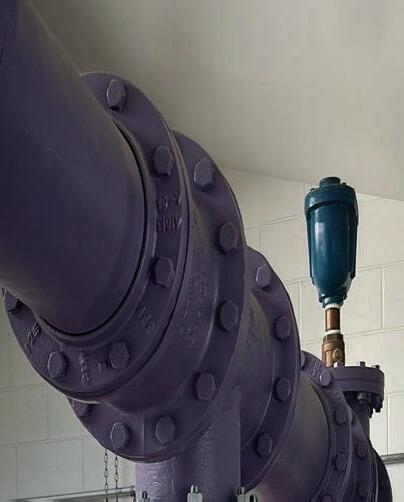



www.merrick.com
Kuosman, Water Division Leader | 303.800.9034 | john.kuosman@merrick.com
partner
water & wastewater
Rocky
Merrick partnered with the Town of Erie, CO on the South Zone Pump Station as part of the Non-Potable Water System Improvements. RETURN TO CONTENTS ROCKY MOUNTAIN WATER MARCH – APRIL 2024 | 37
John
Your
for
in the
Mountain region since 1955.
Taking Care of Business at the 2024 Young Professionals Summit in Portland, Oregon
By Makenzie Chesak, Natalie Gayoso, Andrew Kowalkowski, and Alex Sofranko
Each year, young professionals in the water industry from across the United States and Canada gather together for the AWWA/WEF Young Professionals Summit. This year, we had the privilege of meeting with some of the other young professional leaders in Portland, Oregon. We were able to network with young leaders and discuss the challenges of our industry. The theme of this year’s YP Summit was Taking Care of Business, where topics ranged from collaboration workforce development, to affordability and equity at utilities.

We have gained so much from this opportunity that will bene t us personally and professionally, enabling us to provide new knowledge and tactics for the Rocky Mountain Young Professionals Committee and excel in our respective roles.
The three-day long event began on Sunday, February 11, where participants had the opportunity to visit either the Joint Water Commission (JWC) Treatment Plant in Forest Grove, Oregon, which supplies drinking water to over 450,000 customers via an 85 MGD facility; or the Clean Water Services’ Fernhill Natural Treatment System (NTS), which utilizes natural systems (wetlands) to improve water quality of conventionally treated wastewater prior to release back to the river. It was a fantastic opportunity for us to learn about how our host city conducts its water and wastewater treatment.
The next day, YPs had the opportunity to go to either the AWWA YP Leader Training Day or the WEF Emerging Young Professionals Leaders Workshop to network and to learn from professionals in the respective organizations from across the country. The day was full of interactive activities, discussion panels, and discussions from inspiring young leaders in our industry.
On Tuesday, February 13, the Young Professional Summit combined all those from WEF and AWWA into one conference, with a record total of 299 young professionals! The standout parts of the day were the Water Circuit Challenge where young professionals worked together to complete a series of tasks including AI competitions and operation challenges, building meters, pumps, and pipelines as well as discussing difficulties faced by Utility groups around the country, including aging infrastructure, with Panelists from WEF and AWWA.
Overall, it was a fantastic experience for the four of us that were lucky enough to attend the YP Summit in Portland, Oregon this year. We would like to sincerely thank the Rocky Mountain Water Environmental Association (RMWEA) and the Rocky Mountain Section (RMS) of AWWA for sponsoring us and making this learning
MOVERS AND SHAKERS
RMSAWWA Young Professional Representatives (From left to right: Andrew Kowalkowski, Natalie Gayoso, Makenzie Chesak, Alex Sofranko)
RETURN TO CONTENTS | ROCKY MOUNTAIN WATER MARCH – APRIL 2024 38
opportunity possible. We have gained so much from this opportunity that will benefit us personally and professionally, enabling us to provide new knowledge and tactics for the Rocky Mountain Young Professionals Committee and excel in our respective roles.


Makenzie Chesak, P.E. (she/her) is a Water and Wastewater Engineer with KimleyHorn. She graduated from Oklahoma State University with a B.S. in Civil Engineering in 2018 and works in the Colorado Area.
Makenzie is the Chair of the RMSAWWA Young Professionals Committee. She can be reached by email at makenzie.chesak@kimey-horn.com.
Natalie Gayoso (she/her) is an Environmental Engineer with CDM Smith at the Albuquerque, NM office where she earned her M.S. and B.S. in Civil Engineering from the University of New Mexico. Natalie is the Student Liaison for the New Mexico Water Committee and an active member of the Rocky Mountain Water Young Professionals Communications Committee. Feel free to connect with her on LinkedIn or through email at gayosonm@cdmsmith.com.

Andrew Kowalkowski (he/him) is a water and wastewater Project Engineer with CDM Smith. Andrew received a bachelor’s degree in Chemical Engineering from Case Western Reserve University in Cleveland, OH and a master’s degree from University of Colorado Boulder. He is a member of the Student Design Competition Committee and Communications Committee of the Rocky Mountain Water Young Professionals Communications Committee. Contact Info: 713-423-7322, kowalkowskiaj@cdmsmith.com.

Alex Sofranko (he/him) is a water professional passionate about environmental conservation and the empowerment of the LGBTQ+ community. He is a Project Engineer at Parker Water & Sanitation District and has a bachelor’s degree from The Ohio State University and a master’s degree from University of Colorado Boulder. He is a member of the DEI Committee and the Rocky Mountain Water Young Professionals Communications Commitee. He can be reached at asofranko@pwsd.org.



RETURN TO CONTENTS
WATER MARCH – APRIL 2024 | 39
ROCKY MOUNTAIN



IQ SensorNet The Clear Choice.
Designed for Flexibility

Measure up to 20 parameters per controller and easily expand your network with a modular, plug-and-play system.
Designed for Process Optimization
Improve process control and increase operational efficiency with accurate, continuous water quality monitoring.
Designed for Cost Savings

Reduce operating costs and save on chemical, energy, and water usage with better visibility into your process.





The proof is in the data.






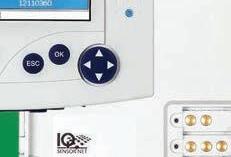
























© 2024 Xylem Inc. info@ysi.com YSI.com/IQSN Learn more at


June 10-13, 2024

Anaheim, California














HOT TOPICS



ACE24 Registration Now Open

The American Water Works Association (AWWA) presents an opportunity to help transform water’s future on June 10-13 during its 2024 Annual Conference & Expo (ACE24) in Anaheim, California.
Water is the world’s most vital resource. There is no replacement. At ACE, we come together to discuss and plan for the serious issues that will transform the future of water. Together, we will make an impact that will determine the trajectory of our planet. Attend ACE and collectively, we will transform the future of water.
Early registration for the 143rd annual event is available through April 20, with more than 10,000 attendees expected to come together to learn, collaborate, and explore the latest solutions to the most pressing challenges facing the water sector.
ACE24 highlights include:
• Hundreds of educational sessions covering the latest in water information, solutions, and best practices.
• An expansive exhibit hall showcasing the newest water sector solutions and innovations.
• An Innovation Hub highlighting cutting-edge advancements.
• Pre-conference workshops and facility tours for hands-on learning experiences.
• Numerous networking events to connect with peers and sector leaders.
Co-hosted by the California-Nevada Section of the AWWA, this year’s conference is themed, “Transforming Our Water Future,” focusing on challenges and innovative solutions in the water sector. The theme will be reflected throughout the conference, from educational sessions to workshops and keynote events.
This year also marks the 50th anniversary of the US Safe Drinking Water Act, a landmark legislation that has significantly improved the quality of drinking water for millions of Americans. ACE24 will celebrate this milestone with special events and sessions highlighting the Act’s impact and ongoing efforts to ensure safe and reliable water for all.
Participants can register for the conference at www.awwa.org/ace/attend/registration
As well as registration options and fees for members, non-members, pre-conference workshops, tours, public officials, and registration category inclusions.

• Exciting competitions and thoughtprovoking keynotes.
• A job and career fair for professionals seeking new opportunities.
• The opportunity to earn AWWA Certificates of Completion.

Attendees should note that, unlike previous years, ACE24 will run from pre-conference workshops on Monday, June 10, through Thursday, June 13, instead of Sunday through Wednesday. More conference details, including the educational program, will be released in the coming months.



HOT TOPICS RETURN TO CONTENTS | ROCKY MOUNTAIN WATER MARCH – APRIL 2024 42









Innovation To Achieve A Brighter Future for our clients, community, and the environment providing sustainable solutions in: •Water & Wastewater Treatment •Water/Wastewater Infrastructure Planning, Design & Rehabilitation •Groundwater Wells •Special District Engineering & Consulting Services •Construction Management Contact Jerry Peña 215 Union Blvd, Suite 500 Lakewood, CO 80228 (720) 744-2233 www.KennedyJenks.com RETURN TO CONTENTS ROCKY MOUNTAIN WATER MARCH – APRIL 2024 | 43


Rocky Mountain Water Magazine Submission Guidelines


Rocky Mountain Water (RMW) is the member magazine publication of the Rocky Mountain Section of the American Water Works Association (RMSAWWA) and the Rocky Mountain Water Environment Association (RMWEA). RMW provides information and material related to the water and wastewater industry for the Rocky Mountain region – Colorado, New Mexico, and Wyoming. You can also view the magazine at rmsawwa.org/page/RMWater.
ARTICLES
Rather than an academic paper, primary articles should resemble a magazine feature story. It should be of interest to the general audience, informational, and free from any promotional language. Specific product information should be made generic unless its inclusion is essential for the reader’s understanding.
Sections of focus are:
• Feature – Directly related to the themes listed in table
• Science, Research, and Technology
• Operations
• Management Pipeline – Leadership and employee relationships
• Hot Topics
• Of Special note – Retirement, new hires, awards, celebrations, achievements, etc.
• Quick Connections – Brief description of projects and whom to contact for more information
TO SUBMIT
Step 1– Article length should be between 700 to 1,000 words and include a title. Footnotes are not used and any references, which should be kept to a minimum, should be attributed within the text of the article.
Step 2 – Short (280 characters) author biography and contact information.
Step 3 – Author photo(s), additional photos, and graphics if applicable.
Step 4 – Submit by emailing rfrankli@ auroragov.org and hfodor@carollo.com in Microsoft Word format.
SUBMISSION GUIDELINES RETURN TO CONTENTS | ROCKY MOUNTAIN WATER MARCH – APRIL 2024 44
PICTURES AND GRAPHICS
Must be high resolution (1 MB or larger) and provided with captions and credit lines. Original graphic files, photos, figures, tables, and charts must be sent separately from text files. Photos and figures should be in TIFF or JPEG format, at least 300 dpi at a minimum size of 3×5 inches. Tables must be in Microsoft Word or Excel format. Please embed photos/graphics within the Word document where you would like them to appear as well as submitting the pictures/ graphics separately.
DISCLOSURE
Unsolicited articles deemed to be acceptable may be published at the discretion of the editor and on a spaceavailable basis. Rocky Mountain Water reserves the right to reject all submissions. Submissions should try to relate to the themes above, but it is not required.


THEME/DUE DATES THEME MAGAZINE RELEASE DATE DUE DATE FOR ARTICLES Collection and Distribution January November 1 of the prior year Resource Recovery March December 21 of the prior year MAKING A DIFFERENCE in People’s Lives & Their Environment PLANNING. ENGINEERING. CONSTRUCTION. MANAGEMENT. OPERATIONS. www.TSTInfrastructure.com 303-799-5197 Greenwood Village, CO 80111 Infrastructure CONSULTING ENGINEERS RETURN TO CONTENTS ROCKY MOUNTAIN WATER MARCH – APRIL 2024 | 45



NEW
EXISTING



















TANKS (270) 826-9000 ext. 2601
| FORT COLLINS | WINTER PARK GLENWOOD SPRINGS | DENVER
EXCELLENCE SINCE 1956
CIVIL ENVIRONMENTAL jvajva.com
Wastewater Treatment Plant Digester, Berthoud CO
TANKS (270) 826-9000 ext. 4601 BOULDER
ENGINEERING
STRUCTURAL
Berthoud
legendary client service and smart solutions in water, environment, transportation, energy and facilities. Inspired to think and driven to solve the world’s environmental and infrastructure challenges. cdmsmith.com
of Denver
MacDonald is proud to help manage a Denver Water program that replaces thousands of lead service lines each year. We also provide engineering services for dams, reservoirs, and tunnels across Colorado. Learn more about our local and global projects. mottmac.com RETURN TO CONTENTS | ROCKY MOUNTAIN WATER MARCH – APRIL 2024 46
Precious resources. Powerful insights. A future we build together.
Providing
Keeping the lead out
Mott
Quick Connections
Do you have an amazing project to share but don’t have the time to write a full article for the Rocky Mountain Water Magazine?
The Rocky Mountain Water Magazine Group launched a new magazine section called “Quick Connections” to connect members and their projects quickly.
RMSAWWA and RMWEA are soliciting short magazine submissions about your projects through a five-to-10-minute form. With a simple three-sentence limit, or about 280 words, we encourage utilities with limited staff time to submit short summaries about current projects.
Visit this QR code to have your project considered to be spotlighted in the magazine. You are 10 minutes away from sharing your ideas and connecting with others.


QUICK CONNECTIONS RETURN TO CONTENTS ROCKY MOUNTAIN WATER MARCH – APRIL 2024 | 47





















ADVERTISER PRODUCT & SERVICE CENTRE
Rocky Mountain Water is made possible by the companies below who convey their important messages on our pages. We thank them for their support of RMSAWWA and RMWEA and its publication and encourage you to contact them when making your purchasing decisions. To make it easier to contact these companies, we have included the page number of their advertisement, their phone number, and, where applicable, their website.
















COMPANY PHONEWEBSITE PAGE AE2S 303-503-8307ae2s.com 51 Boerger, LLC 303-833-9998boerger.com 22 Browns Hill Engineering & Controls 720-344-7771brownshilleng.com 39 Burns & McDonnell 303-721-9292burnsmcd.com 2 Carollo Engineers 303-980-8260carollo.com 6 CDM Smith 303-383-2300cdmsmith.com 46 Cogent, Inc. 303-584-9000cogentcompanies.com 33 Colorado Analytical Laboratory 303-659-2313coloradolab.com 16 Corrosion Probe Inc. 860-767-4402cpiengineering.com 43 Denali Water Solutions 303-886-0572denaliwater.com 24 Garney Construction 303-791-3600garney.com 48 Garver 303-721-6932garverusa.com 4 HDR Engineering 303-764-1520hdrinc.com 26 Hensel Phelps Water 720-592-2000henselphelps.com 21 Huffman Engineering, Inc. 303-376-6280huffmaneng.com 24 Integra Clear Co 800-322-6646vita-d-chlor.com 13 JVA, Inc. 303-444-1951jvajva.com 46 Kennedy Jenks 720-244-2233kennedyjenks.com 43 Lakeside Equipment Corporation 630-837-5640lakeside-equipment.com 14 Merrick & Company 303-964-3333merrick.com 37 MISCOwater 303-309-6150miscowater.com 31 Mott MacDonald 303-831-4700mottmac.com 46 Olsson 303-237-2072olsson.com 9 Orthos Liquid Systems Inc. 843-987-7200orthosfilters.com 3 Pipestone Equipment 303-579-9658pipestoneeq.com 43, 52 Pittsburg Tank & Tower 270-826-9000pttg.com 46 Plummer 303-300-3464plummer.com 25 Ramey Environmental Compliance 303-833-5505recinc.net 28 Short Elliot Hendrickson Inc. 800-325-2055sehinc.com 13 Sunrise Engineering, Inc. 970-372-2255sunrise-eng.com 30 Test Gauge, Inc. 303-353-4797shopbackflow.com 19 Tri-State Seminar LLC 702-900-1159tristateseminar.com 50 TST Infrastructure, LLC 303-799-5197tstinfrastructure.com 45 Xylem YSI 937-688-4255ysi.com 40 To reach professionals through Rocky Mountain Water and its targeted readership, contact Chad at your earliest convenience to discuss your company’s promotional plans. CHAD MORRISON, Marketing Manager Toll Free: 866-985-9788 | E-mail: chad@kelman.ca Address Requested. CSUSpur National Denver, JOINT MOUNTAIN SECTION AMERICAN WORKS ASSOCIATION & MOUNTAIN ENVIRONMENT ASSOCIATION MARCH APRIL 2024 ROCKY MOUNTAIN COLORADO NEW MEXICO WYOMING Resource Recovery ADVERTISER PRODUCT & SERVICE CENTER RETURN TO CONTENTS ROCKY MOUNTAIN WATER MARCH – APRIL 2024 | 49

Don’twithGamble Water with Viva


TRI-STATE 2024
39th ANNUAL TRI-STATE SEMINAR




August 5 – 8, 2024



ALL UNDER ONE ROOF
More Than 300 Exhibitors
200+ Technical Sessions
Expanded Tour Offerings and Workshops for New and Experienced Operators
Up to 24 Contact Hours Available
Over 3 Days

South Point Hotel & Casino | Las Vegas
HOTEL RESERVATIONS
GROUP NAME:
Tri-State Seminar 2024
ROOM RATE: $88/night

REGISTRATION RATES

$99 Early Bird $



(Per Person)


DATES:

(not including taxes & fees)


August 4 - 8, 2024
GROUP CODE: TRI2024


(first 3 are letters, last 4 are numbers)
CUT-OFF DATE: 07/19/2024








$249 After August 4, 2024


















At our very core, AE2S is all about people. Beyond engineering, we are committed to empowering our clients, employee-owners, and all those around us to develop a vision for a better tomorrow.
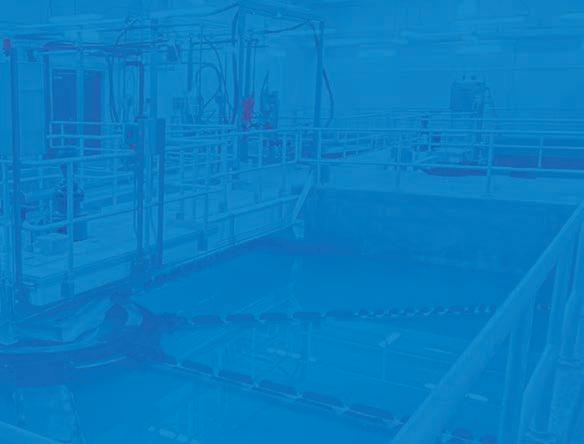
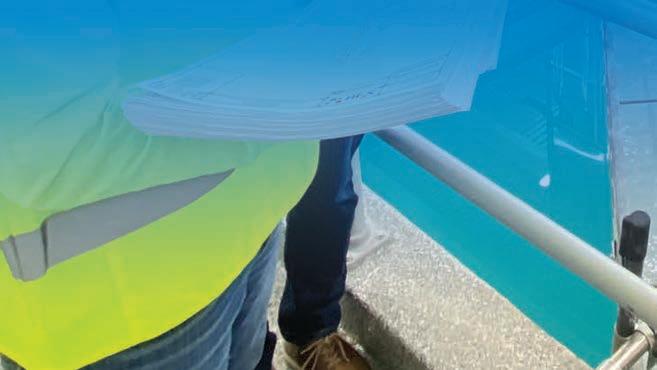

www.ae2s.com
Engineering and Beyond Award-Winning Best Place to Work
Water



































 Jessica Johnson | Colorado Project Manager
GarverUSA.com
Jessica Johnson | Colorado Project Manager
GarverUSA.com








































































 Cynthia Lane
Julia Barker
Alexis Woodrow
Cynthia Lane
Julia Barker
Alexis Woodrow





























 Melina Bourdeau Public Information Officer, Aurora Water
Melina Bourdeau Public Information Officer, Aurora Water
































































 On the left with the toilet is Michelle Christopher, WARWS Source Water Specialist, who also runs 100 miles through Wyoming mountain ranges for fun! Stevie Osborn is in the toilet paper, and Carly Brown, City of Rawlins W/WW Operator WWQ/PCA Board President is on the right in the poo. This was for the virtual 5k to support AWWA scholarship funding.
On the left with the toilet is Michelle Christopher, WARWS Source Water Specialist, who also runs 100 miles through Wyoming mountain ranges for fun! Stevie Osborn is in the toilet paper, and Carly Brown, City of Rawlins W/WW Operator WWQ/PCA Board President is on the right in the poo. This was for the virtual 5k to support AWWA scholarship funding.















 By Kari Larese
By Kari Larese

 Jeff Case is surrounded by his public works team at Centennial Water and Sanitation District and the Highlands Ranch Metro District at his retirement celebration on January 16, 2024.
Jeff Case is surrounded by his public works team at Centennial Water and Sanitation District and the Highlands Ranch Metro District at his retirement celebration on January 16, 2024.





































































































































































